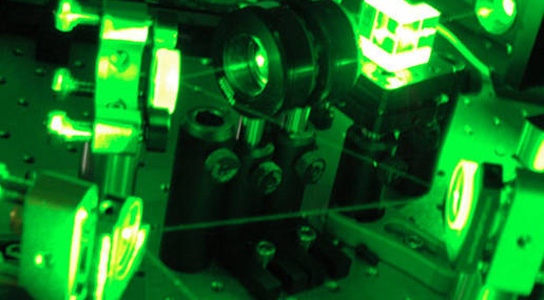
Scientists have developed a photon emitter with a broader range, making it more efficient than any previously developed.
The advent of a quantum internet, one based upon single photons used to encode and send information, which in turn is protected by quantum cryptography, has become more likely, thanks to the development of a photon gun that can fire pairs of photons on demand.
The main reason why such a system is desirable is that it has vastly improved security compared to the computer architecture that’s available right now. If a photon gun fires photons in bunches, they can be intercepted and used to decode the data being transmitted.
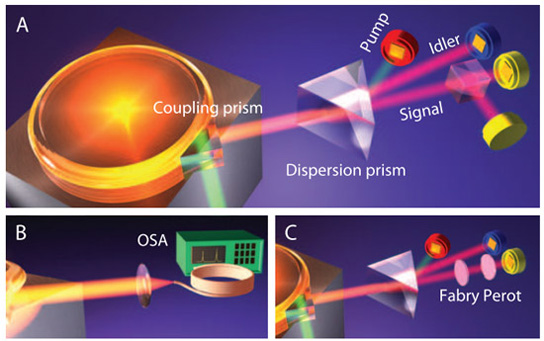
(A) The whispering gallery mode resonator, a diamond prism allows for evanescent wave coupling to the resonator. (B) To verify coarse tuning of the signal and idler wavelengths, the output of the WGMR is analyzed with an optical spectrum analyzer.(C) Fine tuning of the wavelength
Michael Fortsch, from the Max Planck Institute for Science of Light, Erlangen, Germany, and his colleagues developed a photon emitter that has a more flexible range, making it more efficient than any other that had been developed. They published their findings via arXiv.
The gun is actually a disc-shaped crystal of lithium niobate, zapped with 582nm light from a neodymium-dope yttrium aluminum garnet laser. Lithium niobate is a nonlinear material, which causes single photons to spontaneously convert into photons, making it the material of choice for such a project. The 582nm photons ricochet around the disc and eventually emerge unchanged or as a pair of entangled photons with about twice the wavelength, 1060nm. While entangled, the photons don’t have exactly the same wavelength, so they can be easily separated. The pairs are used to transmit information.
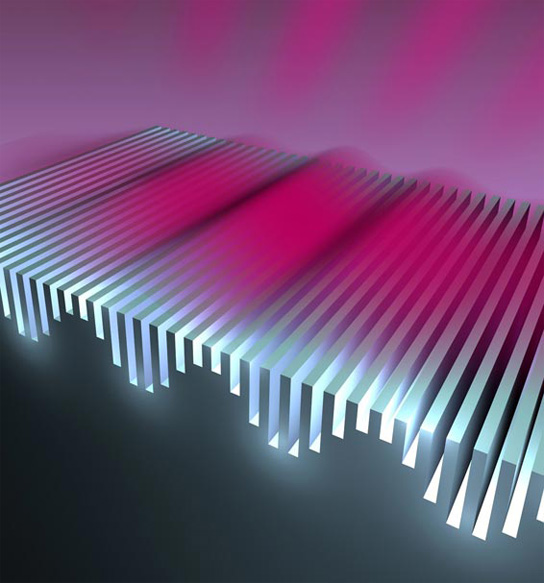
The photon gun fires pairs, making it easy to detect that a photon has been emitted. The gun can emit 10 million pairs of photons per second per mW, which is two orders of magnitude more efficient than any other photon gun in existence.
The wavelength of the photons can also be changed by heating or cooling the crystal, implying that the gun can be tuned to different atomic transitions, allowing the use of different atoms for quantum information storage.
Reference: “A versatile source of single photons for quantum information processing” by Michael Förtsch, Josef U. Fürst, Christoffer Wittmann, Dmitry Strekalov, Andrea Aiello, Maria V. Chekhova, Christine Silberhorn, Gerd Leuchs and Christoph Marquardt, 7 May 2013, Nature Communications.
DOI: 10.1038/ncomms2838

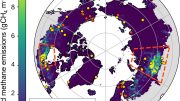
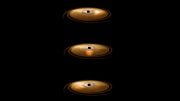

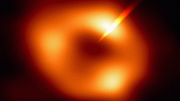



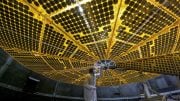
Be the first to comment on "Quantum Photon Gun Could Be Basis for Quantum Information Processing"